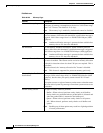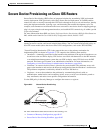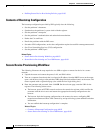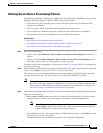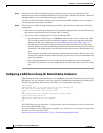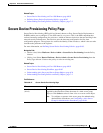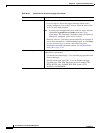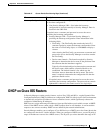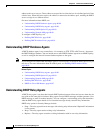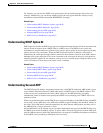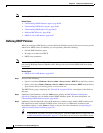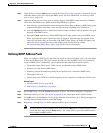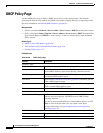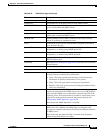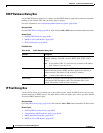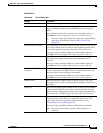
60-88
User Guide for Cisco Security Manager 4.4
OL-28826-01
Chapter 60 Router Device Administration
DHCP on Cisco IOS Routers
addresses the server can use. These addresses are provided to client devices for a defined period of time
called a lease. When this lease expires, the address is returned to the address pool, enabling the DHCP
server to assign it to a different device.
For more information about DHCP, see:
• Understanding DHCP Database Agents, page 60-88
• Understanding DHCP Relay Agents, page 60-88
• Understanding DHCP Option 82, page 60-89
• Understanding Secured ARP, page 60-89
To configure a DHCP policy, see:
• Defining DHCP Policies, page 60-90
• Defining DHCP Address Pools, page 60-91
Understanding DHCP Database Agents
A DHCP database agent is any external host—for example, an FTP, TFTP, or RCP server—that stores
the DHCP bindings database. You can include one or more DHCP database agents in each DHCP policy,
as well as configure the interval between database updates to the agent.
Note If you configure an external DHCP database agent, it is not necessary to define IP address pools, but you
may do so. For more information about IP address pools, see Defining DHCP Address Pools,
page 60-91.
Related Topics
• Understanding DHCP Relay Agents, page 60-88
• Understanding DHCP Option 82, page 60-89
• Understanding Secured ARP, page 60-89
• Defining DHCP Policies, page 60-90
• DHCP on Cisco IOS Routers, page 60-87
Understanding DHCP Relay Agents
A DHCP relay agent is any host that forwards DHCP packets between clients and servers when they do
not reside on the same physical subnet. Relay agents receive DHCP messages and then generate a new
DHCP message to send on another interface. You can configure a reforwarding policy that determines
what the DHCP relay agent should do if a forwarded message already contains relay information.
DHCP relay options in Security Manager include:
• Drop—The relay agent discards messages with existing relay information if Option 82 information
is also present.
• Keep—The relay agent retains existing relay information.
• Replace—The relay agent overwrites existing information with its own relay information.



